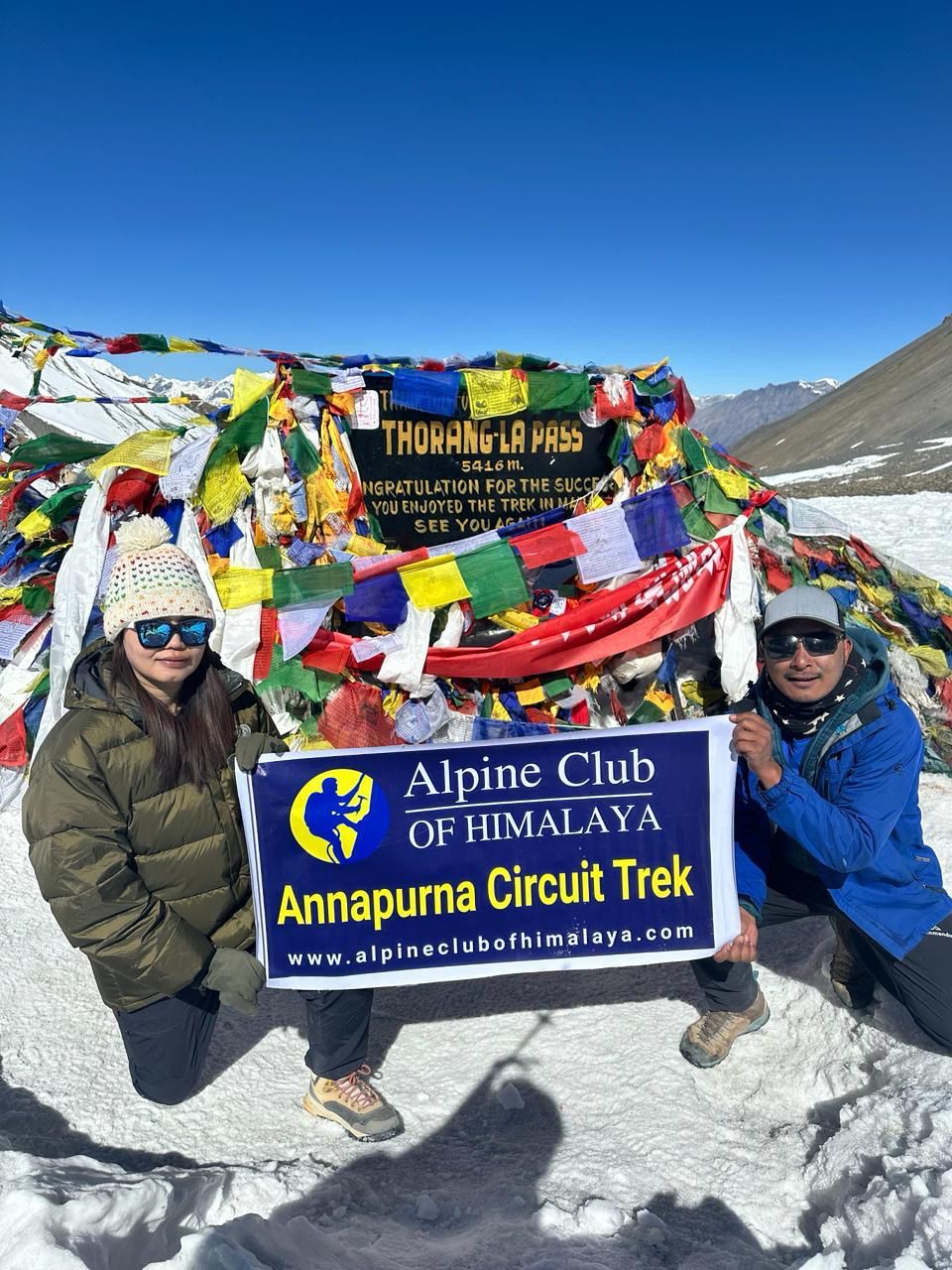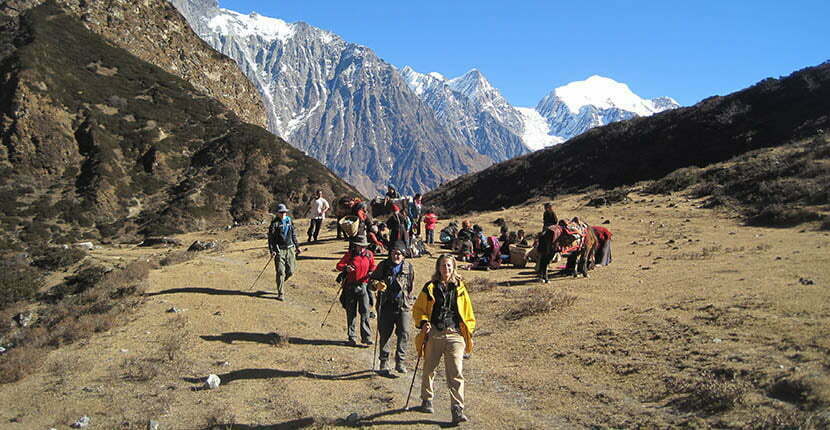Hot Spring Trek and Wildlife Safari is a unique itinerary that takes you across the wonders of the central hills and the flat plains of the country. This 11 days trip is a thrilling experience where you will come across various landscapes. Exploring the culture and traditions of the different ethnic groups. Witnessing the lush central hills, high soaring mountain peaks, river networks, and deep wilderness of low lands.
Overview:
The Hot Spring Trek and Wildlife Safari starts with a flight from Kathmandu to Pokhara. At Pokhara explore the various attractions of the city. Visit ancient temples, cave networks, waterfalls, and lakes. The Following day proceed towards Nayapul, a starting point of the various trek of the Annapurna region. Traversing across lush woodlands of the Mahabharat range head towards the settlement of Thikhedhunga.
From Thikhedhunga, head towards Ghorepani, trekking across pasture lands, agriculture fields, and the magnificent oak and rhododendron woodlands. The next day head to the famous vantage point of Poon Hill. Regarded as one of the best vantage points of the Annapurna region. Nestled at an elevation of 3210 meters, the vantage point boasts great views of the Himalayas and the great wilderness of the region. Witness views of Mountain peaks from Dhaulagiri to Annapurna to Machhapuchhre: Dhaulagiri I ( 8167m), Tukuche (6920m), Nilgiri (6940m), Annapurna South, Annapurna I (8091m), Hiunchuli (6441m), Machhapuchhre (6,993m) and Tarke Kang (7193m). All standing at its grandeur basking in the morning rays of the sun and changing their colors. After witnessing, the sunrise following the forested trail head towards Tatopani.
Tatopani
Tatopani translates as Hot Water, the region nestles various hot water springs. Here soaks in the healing waters of the Himalayas and relax. The next day explore the villages of the region and again head towards the hot water springs. Next, from Tatopani head towards a short trek to the busy settlement of Beni. Upon reaching Beni, start your long drive towards Chitwan. The drive takes you across the high hills to the flat plains of the country.
At Chitwan explore the Chitwan National Park. The park was established in 1984 AD and is listed as a World Heritage Site. Located at the southern central plains in subtropical Inner Terai Lowlands. The park’s southern boundary is boarded by Churia hill and the northern boundary by Rapti River. 70% of the land here is occupied by Sal forest and 30% is occupied by grassland and river land forest. The region is one of the perfect habitats for tigers, rhinos, wild elephants, different types of beer, and reptiles. Head on various activities at Chitwan: Jungle Safari, Canoeing, Bird Watching, Tharu Village Tour, Elephant Breeding Center visit, and Jungle Walk. Not to be missed are the views of the sunset. After exploring Chitwan the following day head towards Kathmandu valley.
This Hot Spring Trek and Wildlife Safari is an ideal trip to witness the country. Taking you across changing landscapes and microclimates in a brief time. Be a part of this trip with the Alpine Club of Himalaya.
Meals: Breakfast
NOTE: All of the aforementioned trekking hours are approximations and should only be used as a general guideline.
Entry and Permits
The following permits are required for trekking to Hot Spring Trek and Wildlife Safari:
- ACAP entry permit fee for foreigners: 3,000 NPR (Approx. US $30)
- ACAP entry permit fee for Indian nationals: 2000 NPR
TIMS Permit:
- NRP 1,000 per person for organized treks through an agency
- NRP 2,000 per person for independent trekkers (going without a guide or porter)
National Park Entry fee.
Note: All the trekking permits are handled by the Alpine Club of Himalaya.
Meals and drinking water:
Along the Annapurna Region Trek, you will be provided with various Nepali, and Tibetan ethnic cuisines, and varieties of continental as well as western meals. Local inhabitants run several tea-houses along the trail, offering basic to luxury facilities for trekkers. These tea-houses provide an opportunity to taste various cuisines, a rarity on most Nepali trekking trails, which you will surely miss elsewhere.
Annapurna Region is a plastic-free zone and has banned the use of bottled Mineral Water. Trekkers can refill their water bottles with boiling water or cold filtered water from any of the teahouses along the trail. While natural water supplies are accessible from drinking taps all along the route, it’s important to avoid untreated water. Instead, opt for refilling at teahouses to ensure safe drinking water.
If you buy a water purification tablet, chlorine drops or utilize SODIS (sunlight assisted) filtration procedures for further assurance, saving money, and reducing plastic pollution.
Accommodation:
Tourist-friendly hotels, lodges, and local accommodations are available on trekking trails and, providing with basic accommodation to luxury and grandeur ones. Luxury hotels and teahouse are situated along the trail that suits your budgets providing comfortable beds with a pillow, electric blankets, hot and cold shower, free WIFI, and many more.
Teahouse along Annapurna region provides you with hot shower, western attached bathrooms and the rooms mostly include twin sharing beds as well as a single bed, with hygienic and clean atmosphere, good mattresses, a pillow, and blankets.
Campsites are also available along the trail providing a special opportunity for campers to sleep under the stars.
Best Time to Visit?
The best season for trekking in Annapurna Region is during autumn and spring. The months of September, October, November, March, April, and May are the best time to visit. These months are better in terms of visibility and climate conditions.
During the autumn season, the months of September, October, and November are one of the best time for trekking in this region, as the weather is clear bringing great visibility of the endless mountain ranges and lush green forest with warm temperatures, the nights are clear and is a perfect opportunity for stargazing.
The spring season of March, April, and May is also the best time to visit the Annapurna Region, the end of the winter season brings a change in the region, varieties of colorful blooming trees of the sub-alpine forest, high green pasture lands covered with wildflowers, mild temperatures, and clear weather. In this season you will witness herds of sheep and yaks grazing in the green high lands.
Monsoon season is not favorable as the weather gets harsh and it's hard to get around the country, with frequent rainstorms and landslides. So, monsoon season is mostly avoided by trekkers.
In the winter season, Annapurna Region receives high snowfall covering most of the trails and making it impossible to travel for this reason.
Travel Insurance:
All clients participating in any activity must have travel insurance. A trustworthy insurance company strongly recommends acquiring a comprehensive insurance plan to cover you in case of personal injury, death, hospital expenses, repatriation fees, helicopter rescue, and any other illnesses. This means they are actively advising you to get the insurance.
Passport and Visa:
Every client must have a valid passport from the return date with a 6 months prior validity by the Nepalese consulate in your country or immigration office at Tribhuvan International Airport in Kathmandu.
Overview
Hot Spring Trek and Wildlife Safari is a unique itinerary that takes you across the wonders of the central hills and the flat plains of the country. This 11 days trip is a thrilling experience where you will come across various landscapes. Exploring the culture and traditions of the different ethnic groups. Witnessing the lush central hills, high soaring mountain peaks, river networks, and deep wilderness of low lands.
Trip Highlight
- Explore the city of Kathmandu, Pokhara, and Chitwan.
- Trek along the Annapurna Region.
- Witness grand views of the Himalayas.
- Scale the famous vantage point of Poon Hill.
- Soak in the healing hot-water spring at Tatopani.
- Explore the Chitwan National Park.
- Head on various activities at the National Park.
- Visit various settlements of the indigenous Tharu communities.

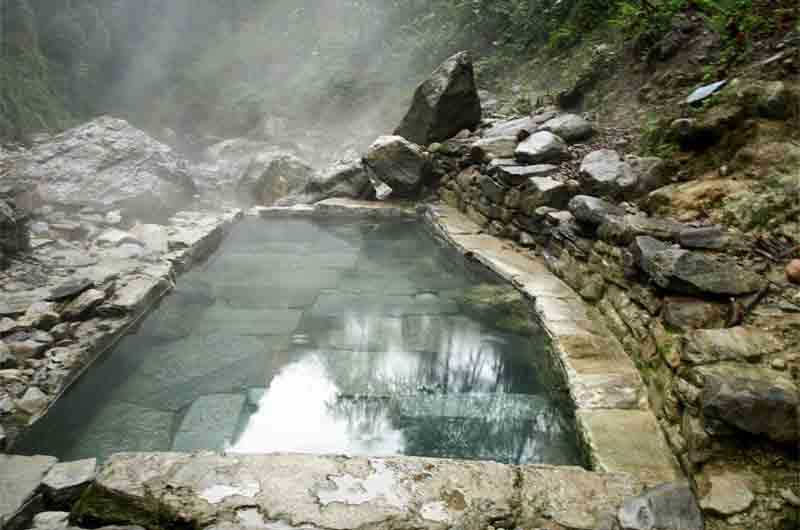
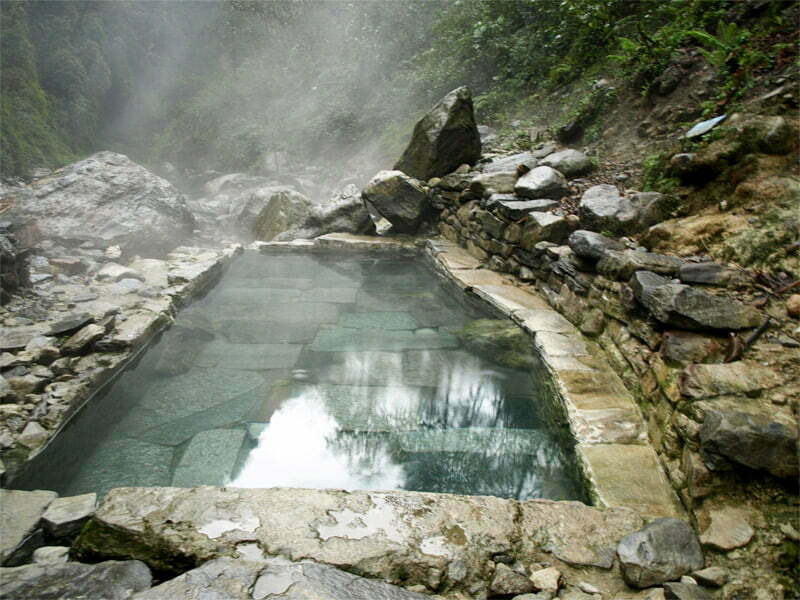
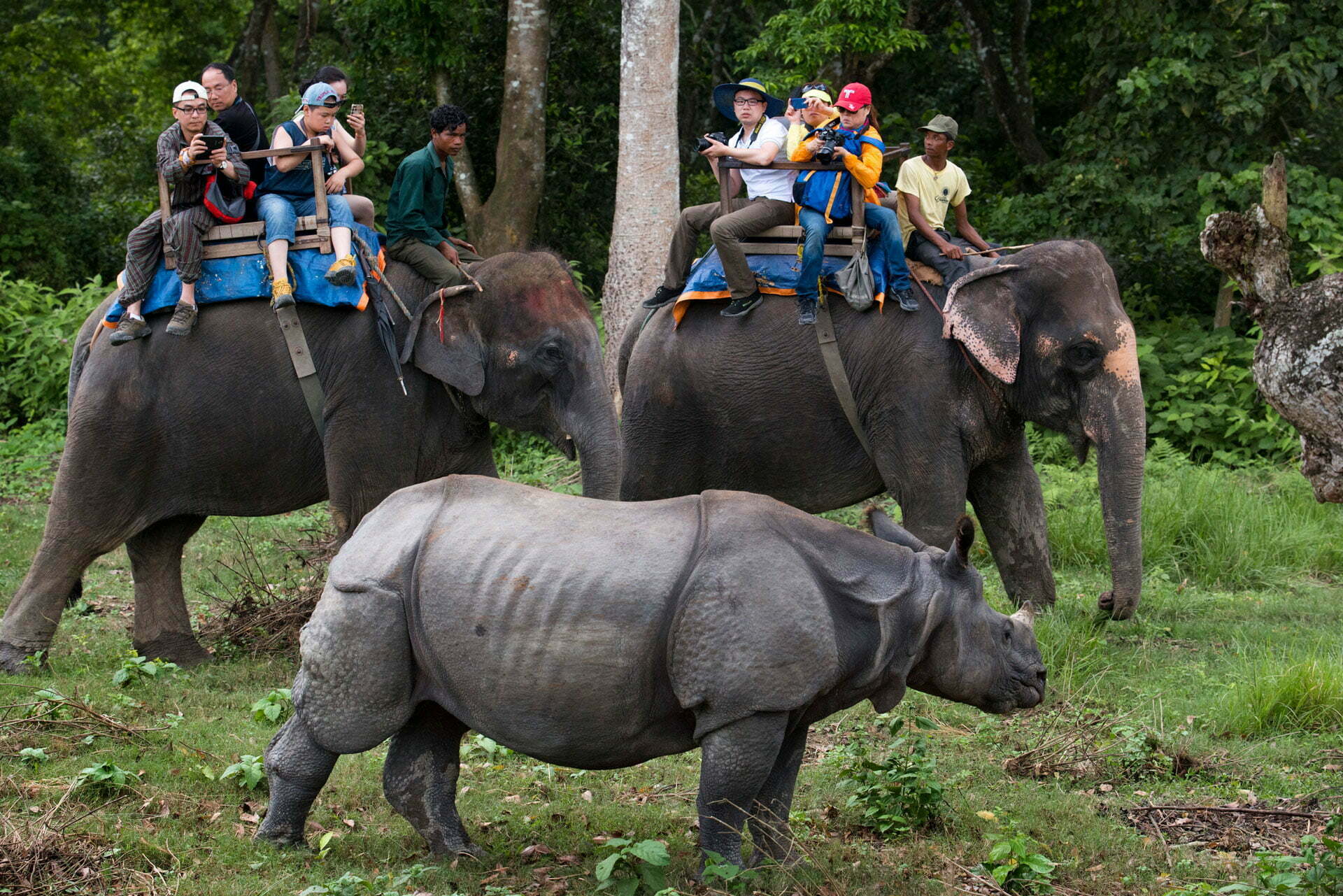
 Kathmandu: Pashupatinath Temple
After breakfast, head on for a full-day sightseeing tour of the Kathmandu Valley. First head towards Durbar (Palace) Square, the epicenter of religious and cultural life, an area filled with old temples and historical significance with glorious old Newari architecture. Some of the sights include Kal Bhairav, Hanuman Dhoka, Taleju Temple, Kasthamandap, and Kumari Ghar; home to the Living Goddess.
Afterward, visit Swayambhunath Stupa, one of the oldest Buddhist stupas in the world, which is majestically set high on a hill overlooking Kathmandu Valley. Thereafter proceed towards Pashupatinath Temple, a Hindu temple dedicated to Lord Shiva. This massive temple complex sits alongside the banks of the holy Bagmati River. Only Hindus are allowed to enter the courtyard of the temple, whereas tourists can see the temple from the eastern side of the River. Later visit Boudhanath, a Buddhist Stupa which is one of the largest in the world. This massive structure stands tall with four pairs of eyes each facing the four cardinal directions, watching for the righteous behavior of mankind and human prosperity. After exploring the valley head towards your accommodation. Later join in for a brief orientation regarding the trek.
Note: There are various sites that you can choose from.
Maximum Altitude: 1400m
Meals: Breakfast
Accommodation: Hotel in Kathmandu
Kathmandu: Pashupatinath Temple
After breakfast, head on for a full-day sightseeing tour of the Kathmandu Valley. First head towards Durbar (Palace) Square, the epicenter of religious and cultural life, an area filled with old temples and historical significance with glorious old Newari architecture. Some of the sights include Kal Bhairav, Hanuman Dhoka, Taleju Temple, Kasthamandap, and Kumari Ghar; home to the Living Goddess.
Afterward, visit Swayambhunath Stupa, one of the oldest Buddhist stupas in the world, which is majestically set high on a hill overlooking Kathmandu Valley. Thereafter proceed towards Pashupatinath Temple, a Hindu temple dedicated to Lord Shiva. This massive temple complex sits alongside the banks of the holy Bagmati River. Only Hindus are allowed to enter the courtyard of the temple, whereas tourists can see the temple from the eastern side of the River. Later visit Boudhanath, a Buddhist Stupa which is one of the largest in the world. This massive structure stands tall with four pairs of eyes each facing the four cardinal directions, watching for the righteous behavior of mankind and human prosperity. After exploring the valley head towards your accommodation. Later join in for a brief orientation regarding the trek.
Note: There are various sites that you can choose from.
Maximum Altitude: 1400m
Meals: Breakfast
Accommodation: Hotel in Kathmandu 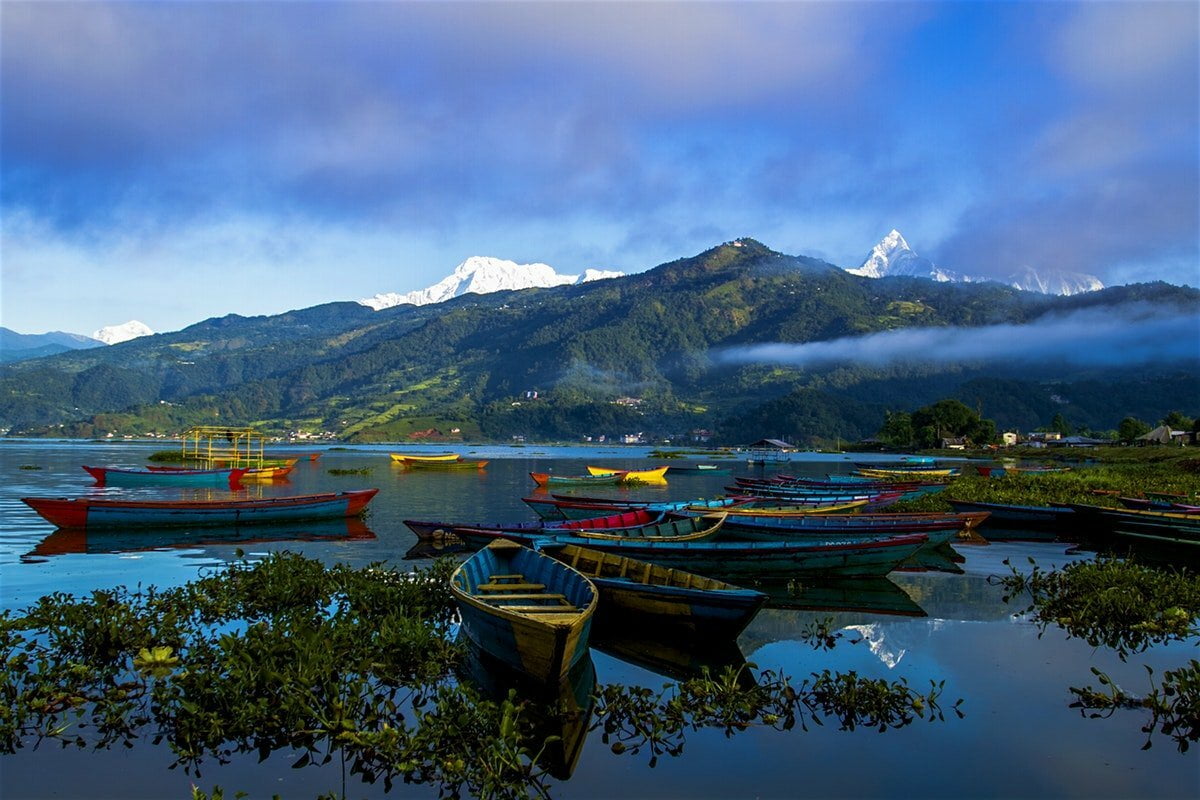 Pokhara: Phewa Lake
After breakfast head towards the domestic airport and catch a flight to the city of lakes Pokhara. The flight takes you across lush rolling hills and views of snowcapped mountain ranges. Witness dazzling views of Ganesh Himal, Mt. Manaslu, Mt. Annapurna, and Machhapuchhre. Upon reaching Pokhara after a brief rest head out to explore the wonders of the city. Visit the deep narrow gorge of the roaring Seti River, Davi’s fall a renowned waterfall of the region, and further explore the networks of Gupteshwar Cave and the Bat Cave. After exploring the wonders of the city next stroll the banks of Phewa Lake and witness grand views of the Himalayas.
Maximum Altitude: 822m
Duration: 30 minutes flight
Meals: Breakfast, Lunch, and Dinner
Accommodation: Hotel in Pokhara
Pokhara: Phewa Lake
After breakfast head towards the domestic airport and catch a flight to the city of lakes Pokhara. The flight takes you across lush rolling hills and views of snowcapped mountain ranges. Witness dazzling views of Ganesh Himal, Mt. Manaslu, Mt. Annapurna, and Machhapuchhre. Upon reaching Pokhara after a brief rest head out to explore the wonders of the city. Visit the deep narrow gorge of the roaring Seti River, Davi’s fall a renowned waterfall of the region, and further explore the networks of Gupteshwar Cave and the Bat Cave. After exploring the wonders of the city next stroll the banks of Phewa Lake and witness grand views of the Himalayas.
Maximum Altitude: 822m
Duration: 30 minutes flight
Meals: Breakfast, Lunch, and Dinner
Accommodation: Hotel in Pokhara  Nayapul
The 41 km/25 miles drive takes you across high hill sections with views of the greater Himalayas. Upon reaching Nayapul you will start your trek. Start by following a steep trail across the lush woodlands, after a while the trail drops to a bridge over a small stream to the village of Birethanti. From Birethanti take the left branch of the trail on the west side of the bridge, as you progress you will reach the Annapurna Conservation Area Project Check post. Hereafter your ACAP permits are inspected head towards Birethanti. Following the forested trail of bamboo, you will reach a large waterfall and a swimming hole, the village of Sudami. From here ascending a hill section up the side of the valley you will reach Hille. A brief walk from here will eventually lead you to the settlement of Thikhedhunga.
Maximum Altitude: 1577m (Tikhedhunga)
Duration: 1-hour drive and 4-5 hours trek
Meals: Breakfast, Lunch, and Dinner
Accommodation: Guesthouse
Nayapul
The 41 km/25 miles drive takes you across high hill sections with views of the greater Himalayas. Upon reaching Nayapul you will start your trek. Start by following a steep trail across the lush woodlands, after a while the trail drops to a bridge over a small stream to the village of Birethanti. From Birethanti take the left branch of the trail on the west side of the bridge, as you progress you will reach the Annapurna Conservation Area Project Check post. Hereafter your ACAP permits are inspected head towards Birethanti. Following the forested trail of bamboo, you will reach a large waterfall and a swimming hole, the village of Sudami. From here ascending a hill section up the side of the valley you will reach Hille. A brief walk from here will eventually lead you to the settlement of Thikhedhunga.
Maximum Altitude: 1577m (Tikhedhunga)
Duration: 1-hour drive and 4-5 hours trek
Meals: Breakfast, Lunch, and Dinner
Accommodation: Guesthouse  Ghorepani
Start by traversing along the deep wilderness and crossing the Thikhedhunga Khola on a suspension bridge. As you progress you will cross another river network of the Bhurungdi Khola on a large bridge at an elevation of 1520 meters. Next, you will be ascending a steep section of a well-maintained series of stone stairs, more than 3300 which eventually leads you to the large Magar village of Ulleri nestled at an elevation of 2080 meters.
Furthermore, head past the pasture and lush agriculture fields and you will come across the deep forest trails. Following the trail, you will reach Banthanti. From Banthanti, traverse across magnificent oak and rhododendron forests crossing several sparkling clear streams, a small ridge to another Magar village of Nangathanti at an elevation of 2460 meters. Along this section witness eight different species of Nepal’s national flower rhododendron. After a brief walk from Nangathanti, you will finally reach the settlement of Ghorepani.
Maximum Altitude: 2750m
Duration: 5-6 hours
Meals: Breakfast, Lunch, and Dinner
Accommodation: Guesthouse
Ghorepani
Start by traversing along the deep wilderness and crossing the Thikhedhunga Khola on a suspension bridge. As you progress you will cross another river network of the Bhurungdi Khola on a large bridge at an elevation of 1520 meters. Next, you will be ascending a steep section of a well-maintained series of stone stairs, more than 3300 which eventually leads you to the large Magar village of Ulleri nestled at an elevation of 2080 meters.
Furthermore, head past the pasture and lush agriculture fields and you will come across the deep forest trails. Following the trail, you will reach Banthanti. From Banthanti, traverse across magnificent oak and rhododendron forests crossing several sparkling clear streams, a small ridge to another Magar village of Nangathanti at an elevation of 2460 meters. Along this section witness eight different species of Nepal’s national flower rhododendron. After a brief walk from Nangathanti, you will finally reach the settlement of Ghorepani.
Maximum Altitude: 2750m
Duration: 5-6 hours
Meals: Breakfast, Lunch, and Dinner
Accommodation: Guesthouse 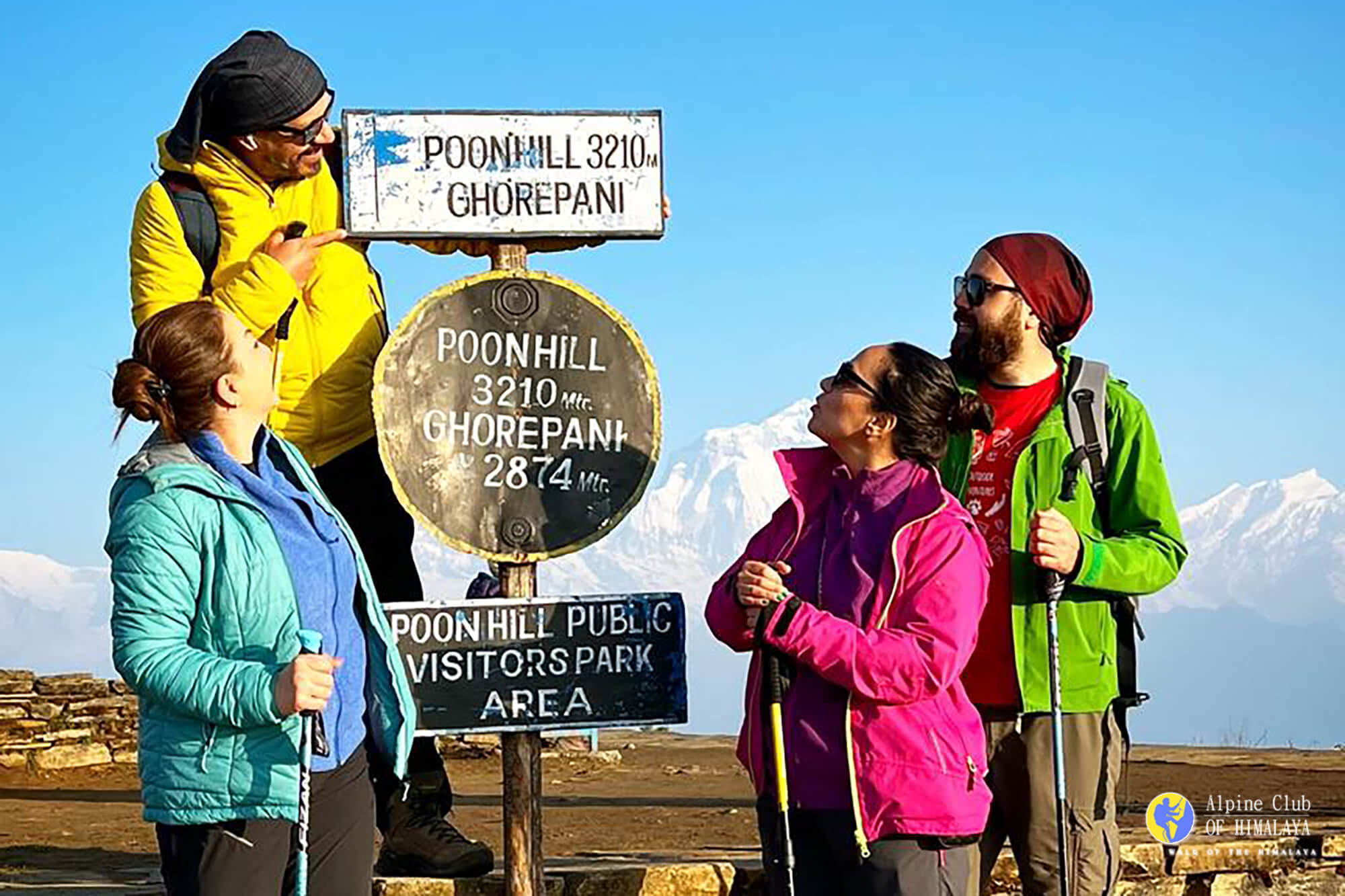 Ghorepani Poonhill
Wake up before dawn and head towards Poon Hill, which is regarded as one of the best vantage points in the Annapurna region. The climb to the top takes around a couple of hours on an ascending trail with well-maintained series of stairs. Upon reaching the top witness views of the great landscapes of the deep wilderness and the snowcapped peaks. Mountain peaks from Dhaulagiri to Annapurna to Machhapuchhre: Dhaulagiri I ( 8167m), Tukuche (6920m), Nilgiri (6940m), Annapurna South, Annapurna I (8091m), Hiunchuli (6441m), Machhapuchhre (6,993m) and Tarke Kang (7193m). All standing at its grandeur basking in the morning rays of the sun and changing their colors.
After observing the wonderful Himalayas vistas and splendid views of the sunrise, continue the trek towards Tatopani. Following the steep descent head towards the settlement of Chitre at an elevation of 2420 meters. Next, progressing on the trail you will reach the large and prosperous Magar village of Sikha. Along this section witness terrace farms and lush agriculture belts. . From Shikha, the trail descends gently to Ghara at 1780 meters.
A further steep descent of 500 meters will lead you to Ghar Khola, from where the trail crosses the river on a suspension bridge. Next, you will be traversing high hills above the Kaligandaki River before crossing the river. Following the northern trail covered with the deep wilderness of sub-tropical woodlands, you will eventually reach Tatopani.
Tatopani is translated as hot water in Nepal. The region nestles various hot water springs. Upon reaching Tatopani leave your heavy backpacks at the hotel and head towards the springs. Soak in your aching muscles in the healing Himalayan hot spring.
Maximum Altitude: 3210m
Duration:
Meals: Breakfast, Lunch, and Dinner
Accommodation: Guesthouse
Ghorepani Poonhill
Wake up before dawn and head towards Poon Hill, which is regarded as one of the best vantage points in the Annapurna region. The climb to the top takes around a couple of hours on an ascending trail with well-maintained series of stairs. Upon reaching the top witness views of the great landscapes of the deep wilderness and the snowcapped peaks. Mountain peaks from Dhaulagiri to Annapurna to Machhapuchhre: Dhaulagiri I ( 8167m), Tukuche (6920m), Nilgiri (6940m), Annapurna South, Annapurna I (8091m), Hiunchuli (6441m), Machhapuchhre (6,993m) and Tarke Kang (7193m). All standing at its grandeur basking in the morning rays of the sun and changing their colors.
After observing the wonderful Himalayas vistas and splendid views of the sunrise, continue the trek towards Tatopani. Following the steep descent head towards the settlement of Chitre at an elevation of 2420 meters. Next, progressing on the trail you will reach the large and prosperous Magar village of Sikha. Along this section witness terrace farms and lush agriculture belts. . From Shikha, the trail descends gently to Ghara at 1780 meters.
A further steep descent of 500 meters will lead you to Ghar Khola, from where the trail crosses the river on a suspension bridge. Next, you will be traversing high hills above the Kaligandaki River before crossing the river. Following the northern trail covered with the deep wilderness of sub-tropical woodlands, you will eventually reach Tatopani.
Tatopani is translated as hot water in Nepal. The region nestles various hot water springs. Upon reaching Tatopani leave your heavy backpacks at the hotel and head towards the springs. Soak in your aching muscles in the healing Himalayan hot spring.
Maximum Altitude: 3210m
Duration:
Meals: Breakfast, Lunch, and Dinner
Accommodation: Guesthouse 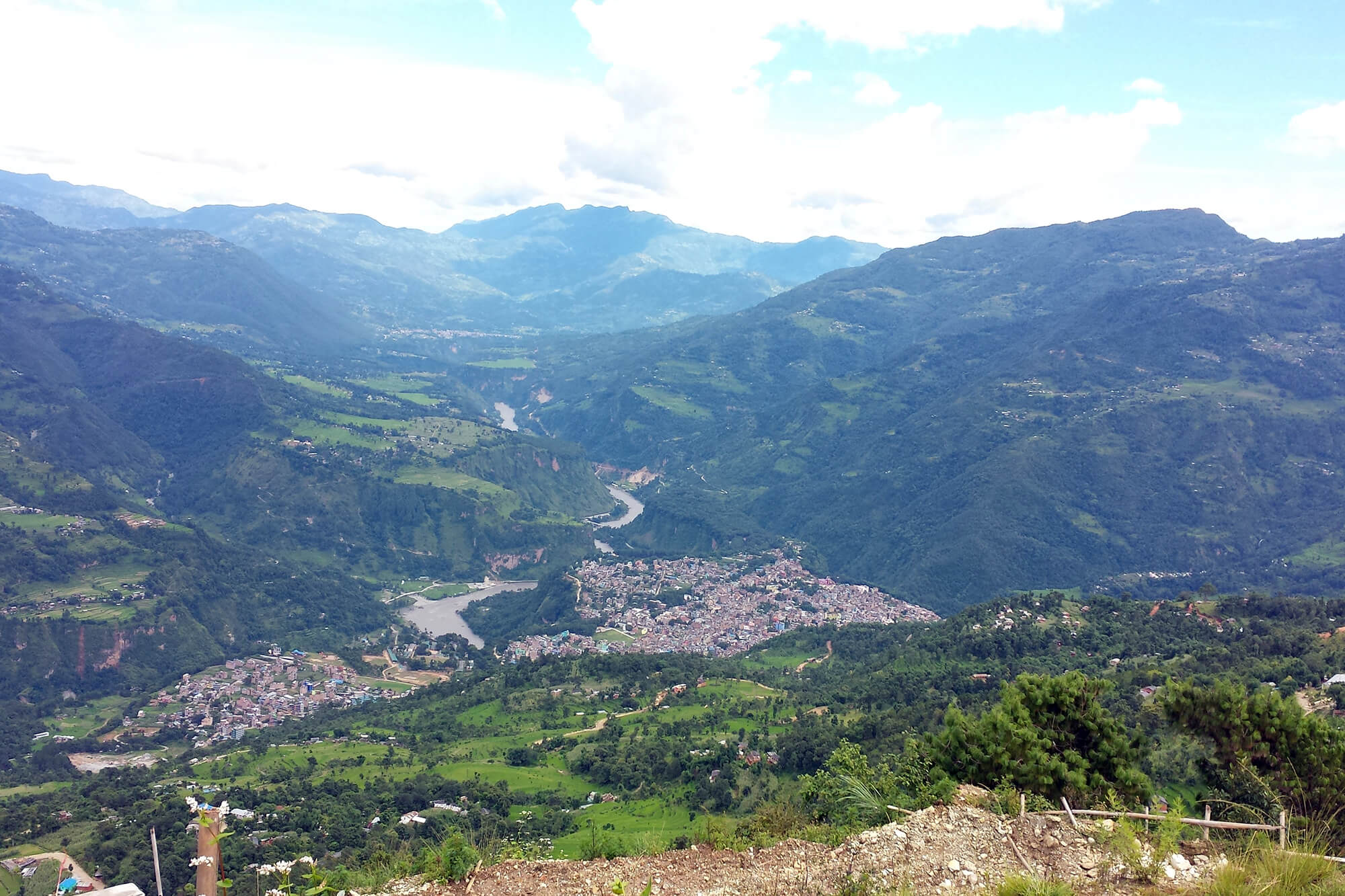 Beni
After breakfast head on a short hike towards Beni. Upon reaching Beni head towards your transportation and proceed to Chitwan. The long drive will take you across various settlements and lush sections of woodlands. From the high hills of Central Nepal, you will reach the low lands.
Upon reaching Chitwan Head towards the Chitwan National Park. A world heritage-listed site, an area teamed with Tiger, pre-historic one-horn rhino, wild elephants, fish-eating crocodile, Asian alligator, common leopard, varieties of deer, wild boar, wild water buffalo, 40 different species of snakes including the Indian rock python biggest snake of Nepal, 650 species of birds roam the area and more the 40 different types of grass can be found in Chitwan some of which grows taller than the elephants. Upon reaching Chitwan head towards your accommodation.
Maximum Altitude: 899 (Beni)
Duration: 2 hours trek and 9 hours drive to Chitwan
Meals: Breakfast, Lunch, and Dinner
Accommodation: Hotel in Chitwan
Beni
After breakfast head on a short hike towards Beni. Upon reaching Beni head towards your transportation and proceed to Chitwan. The long drive will take you across various settlements and lush sections of woodlands. From the high hills of Central Nepal, you will reach the low lands.
Upon reaching Chitwan Head towards the Chitwan National Park. A world heritage-listed site, an area teamed with Tiger, pre-historic one-horn rhino, wild elephants, fish-eating crocodile, Asian alligator, common leopard, varieties of deer, wild boar, wild water buffalo, 40 different species of snakes including the Indian rock python biggest snake of Nepal, 650 species of birds roam the area and more the 40 different types of grass can be found in Chitwan some of which grows taller than the elephants. Upon reaching Chitwan head towards your accommodation.
Maximum Altitude: 899 (Beni)
Duration: 2 hours trek and 9 hours drive to Chitwan
Meals: Breakfast, Lunch, and Dinner
Accommodation: Hotel in Chitwan 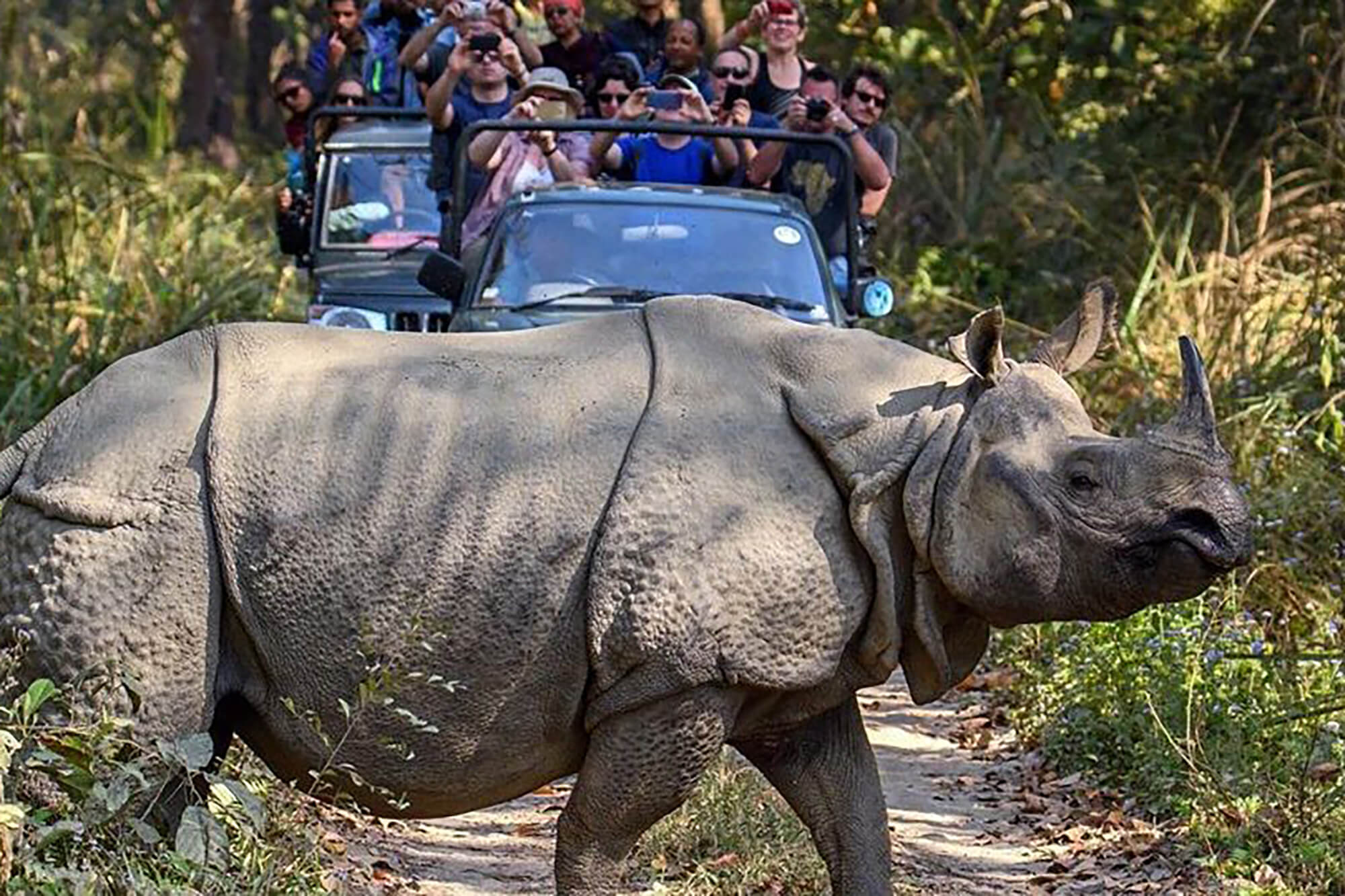 Jungle Safari:
Head on a four-wheel jeep and drive towards the park. Exploring the old-growth forest, and visiting various parts of the National Park. The jungle safari is one of the best ways to discover the wildlife of the region. Witness the concealed secrets of the jungle and catch views of various species of deer, the famous one-horned rhino and if you are lucky get a glimpse of the Royal Bengal Tiger and other various exotic animals of the region.
Jungle Safari:
Head on a four-wheel jeep and drive towards the park. Exploring the old-growth forest, and visiting various parts of the National Park. The jungle safari is one of the best ways to discover the wildlife of the region. Witness the concealed secrets of the jungle and catch views of various species of deer, the famous one-horned rhino and if you are lucky get a glimpse of the Royal Bengal Tiger and other various exotic animals of the region.
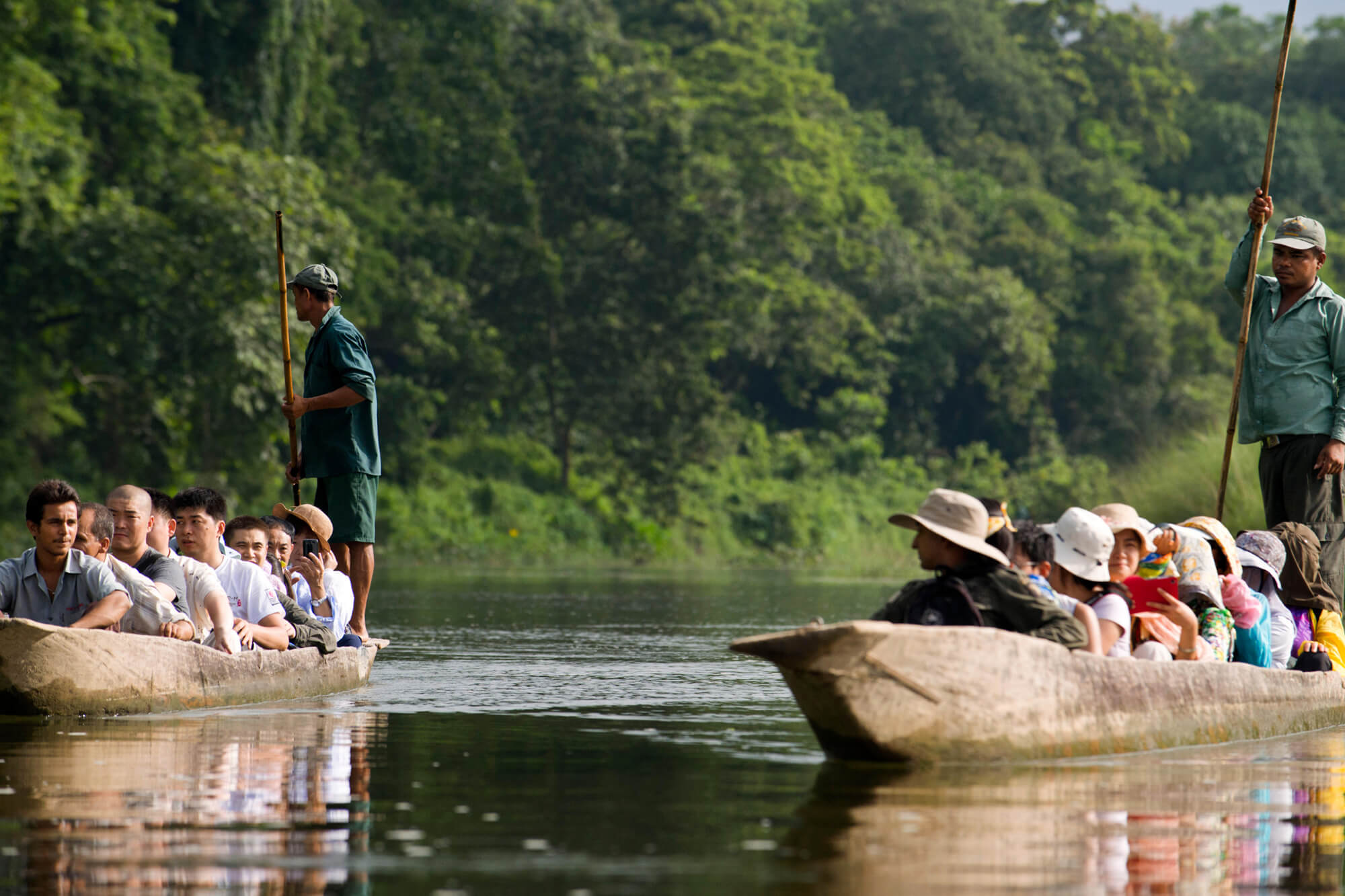 Canoeing:
Another popular activity in the park is the boat/canoe trip down the Rapti and the Narayani Rivers. Explore the calm waters on a narrow boat and witness the Magar (Asian Alligator) and Gariyal (Fish eater Crocodile) basking in the sun in their natural habitation at close proximity. Also, witness other bio-diversities of the region.
Canoeing:
Another popular activity in the park is the boat/canoe trip down the Rapti and the Narayani Rivers. Explore the calm waters on a narrow boat and witness the Magar (Asian Alligator) and Gariyal (Fish eater Crocodile) basking in the sun in their natural habitation at close proximity. Also, witness other bio-diversities of the region.
 Bird Watching:
Chitwan National Park is home to about 650 Species of birds. A region famous for birds, during Jungle safari and canoe trips you will have a great opportunity to see many species of birds including waterfowl, Brahminy ducks, pintails, bar-headed geese, cormorants, woodpeckers, hornbills, peacocks, peahens, floricans, red-headed trogons, and many others.
Bird Watching:
Chitwan National Park is home to about 650 Species of birds. A region famous for birds, during Jungle safari and canoe trips you will have a great opportunity to see many species of birds including waterfowl, Brahminy ducks, pintails, bar-headed geese, cormorants, woodpeckers, hornbills, peacocks, peahens, floricans, red-headed trogons, and many others.
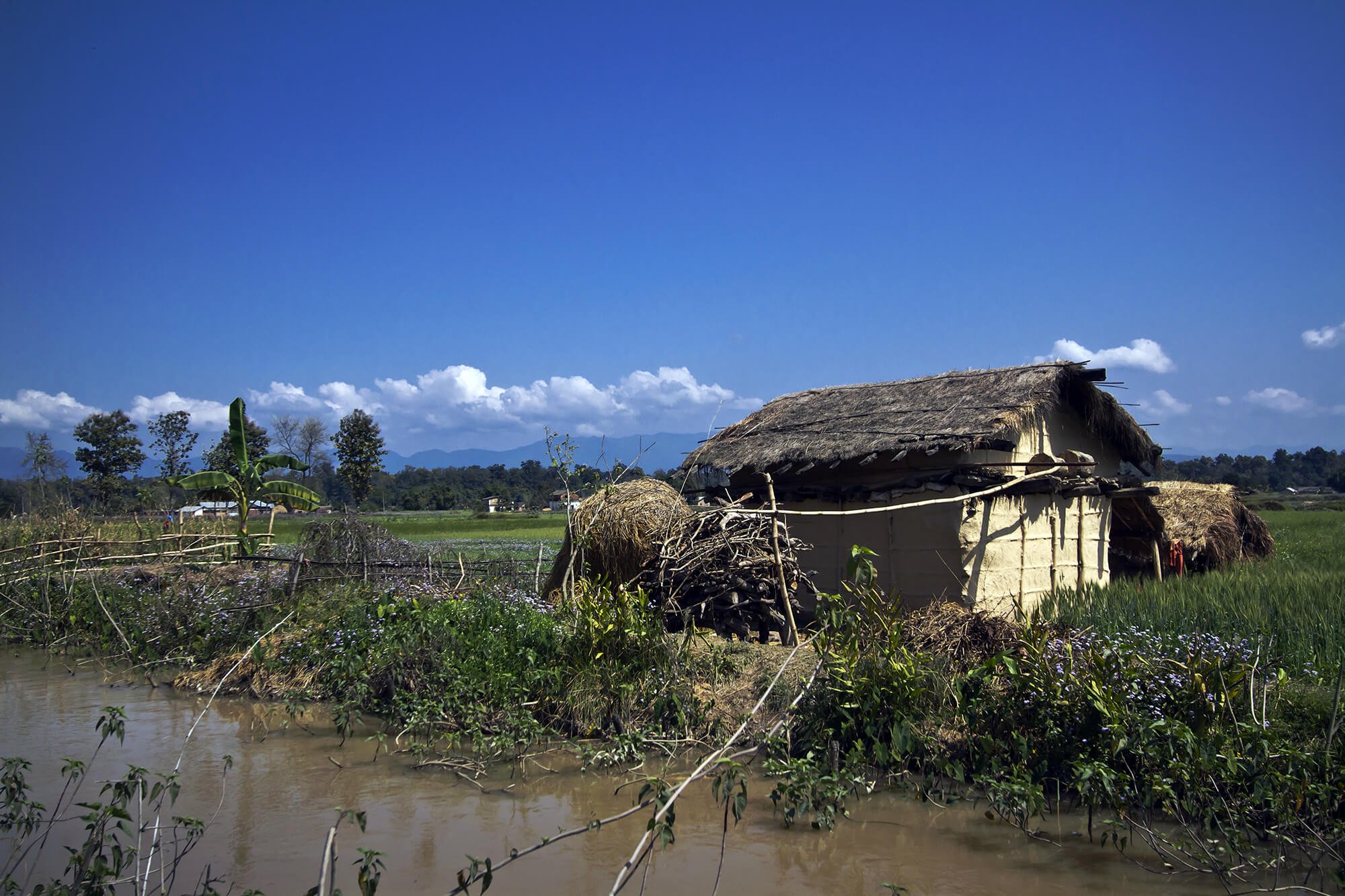 Tharu Village Tour:
The other activities include the exploration of the Tharu community. Tharu is the indigenous people living in the heart of the jungle. Visit the Tharu community and get an insight into their culture, traditions, and customs.
Tharu Village Tour:
The other activities include the exploration of the Tharu community. Tharu is the indigenous people living in the heart of the jungle. Visit the Tharu community and get an insight into their culture, traditions, and customs.
 Elephant Breeding Center
Another attraction in Chitwan National park is the Elephant Breeding Center. Here learn about these gentle giants and explore around and visit museums.
Elephant Breeding Center
Another attraction in Chitwan National park is the Elephant Breeding Center. Here learn about these gentle giants and explore around and visit museums.
 Jungle Walk:
For more adventure and thrilling activity head on a short jungle walk. Traversing across the flat lands covered with miles of undergrowth and lush woodlands. The Jungle walk is a perfect opportunity to witnessing the great biodiversity of the region up close.
After exploring the National park, head towards the banks of Rapti River and witness the sunset. The sunset from the Terai plains is not to be missed.
Maximum Altitude: 415m
Meals: Breakfast, Lunch, and Dinner
Accommodation: Hotel in Chitwan
Jungle Walk:
For more adventure and thrilling activity head on a short jungle walk. Traversing across the flat lands covered with miles of undergrowth and lush woodlands. The Jungle walk is a perfect opportunity to witnessing the great biodiversity of the region up close.
After exploring the National park, head towards the banks of Rapti River and witness the sunset. The sunset from the Terai plains is not to be missed.
Maximum Altitude: 415m
Meals: Breakfast, Lunch, and Dinner
Accommodation: Hotel in Chitwan 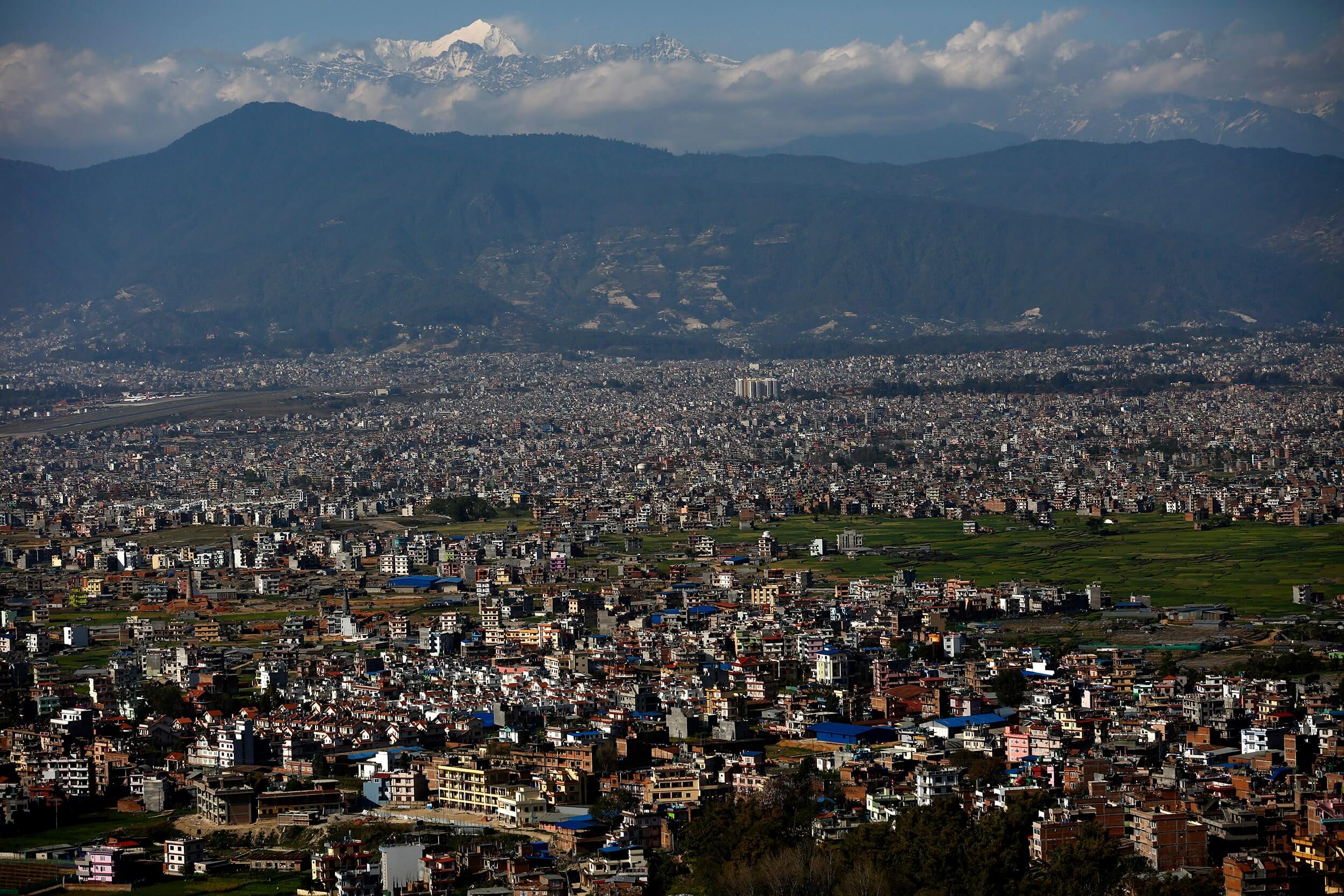 Kathmandu Valley
After morning breakfast head on a long drive towards Kathmandu valley. The drive takes you from the low lands of the country to the central hills. Upon reaching Kathmandu head towards your accommodation and rest. Later in the evening join in for a farewell dinner to mark the end of your trip.
Maximum Altitude: 1400m
Duration: 5-6 hours drive
Meals: Breakfast, Lunch, and Dinner
Accommodation: Hotel in Kathmandu
Kathmandu Valley
After morning breakfast head on a long drive towards Kathmandu valley. The drive takes you from the low lands of the country to the central hills. Upon reaching Kathmandu head towards your accommodation and rest. Later in the evening join in for a farewell dinner to mark the end of your trip.
Maximum Altitude: 1400m
Duration: 5-6 hours drive
Meals: Breakfast, Lunch, and Dinner
Accommodation: Hotel in Kathmandu 







